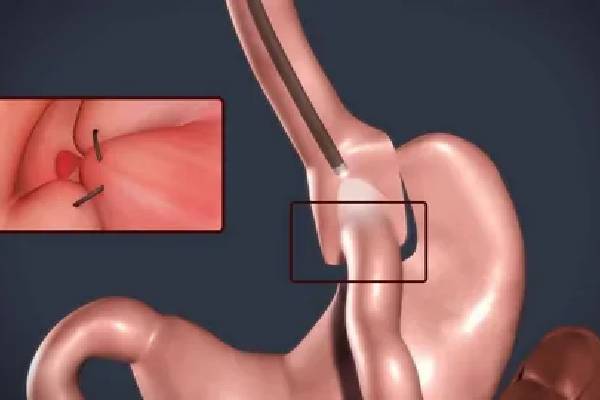Braces are a significant investment in dental health, and the cost of orthodontic treatment can vary greatly depending on several factors. For many, health insurance can offset some of these expenses, making braces more affordable. This article will provide an overview of what you can expect to pay for braces with insurance, how different factors affect the cost, and tips to help you maximize your insurance benefits.
Understanding the Cost of Braces
The cost of braces typically depends on factors such as the type of braces, length of treatment, and the specific dental needs of the patient. On average, traditional metal braces can cost between $3,000 and $7,000 without insurance. However, with insurance, this cost may be reduced by several thousand dollars, depending on the coverage provided.
Types of Braces and Their Costs
Here’s a breakdown of common types of braces and their average costs:
- Traditional Metal Braces: These are the most common type of braces and usually the most affordable option, costing between $3,000 and $7,000 without insurance.
- Ceramic Braces: Made to blend with natural teeth, ceramic braces cost more than metal braces, averaging between $4,000 and $8,000.
- Lingual Braces: Attached behind the teeth, lingual braces are a less visible option and can cost between $8,000 and $10,000.
- Clear Aligners (e.g., Invisalign): These clear, removable aligners can range from $3,000 to $7,500 depending on the complexity of treatment.
How Insurance Can Help Cover the Cost of Braces
Many dental insurance plans cover a portion of the cost of braces, but coverage varies depending on the insurance provider, plan, and the patient’s age. Insurance typically covers a percentage of the treatment cost or offers a fixed dollar amount toward braces, up to a certain limit.
Typical Insurance Coverage for Braces
- Orthodontic Coverage Limits: Many insurance plans cover orthodontic treatment but impose a lifetime maximum amount. This lifetime maximum typically ranges from $1,000 to $3,000, though higher amounts are possible.
- Percentage-Based Coverage: Some plans cover a specific percentage of orthodontic costs, such as 50%. For example, if your plan covers 50% of orthodontic treatment up to a maximum of $2,000, your insurance would pay half of your treatment costs, up to $2,000.
- Age Limitations: Some insurance plans only cover braces for children and adolescents, with no coverage for adults. Adult braces coverage, if available, may come with a lower lifetime maximum or require additional premiums.
How Much Will You Pay Out of Pocket?
While insurance can significantly reduce the cost of braces, you’ll likely still have out-of-pocket expenses. Your final cost will depend on the total cost of the braces, the percentage your insurance covers, and any deductibles or copays associated with your plan.
For example, if the total cost of braces is $5,000, and your insurance covers 50% of the cost up to a $1,500 limit, you would pay $3,500 out of pocket. Some insurance plans also include deductibles that must be met before coverage begins, which can add to your initial costs.
Factors That Impact the Cost of Braces with Insurance
When estimating the cost of braces with insurance, it’s essential to consider the following factors:
1. Type of Braces
As mentioned, traditional metal braces are generally more affordable than ceramic, lingual braces, or clear aligners. However, some insurance plans have different levels of coverage based on the type of braces, covering only a portion or excluding higher-cost options altogether.
2. Treatment Duration
The length of orthodontic treatment varies from patient to patient. Treatment can last anywhere from 12 months to 3 years, depending on the complexity of the case. Insurance may only cover treatment within a set timeframe, so prolonged treatment could result in additional out-of-pocket costs.
3. Location and Orthodontist Fees
The cost of braces can vary based on location and the orthodontist’s fees. In urban areas, the cost of orthodontic treatment may be higher than in rural areas. Choosing an in-network orthodontist can help reduce costs, as these providers have pre-negotiated rates with insurance companies.
4. Insurance Plan Type
Each insurance plan is different. Some plans cover a higher percentage of costs, have a higher lifetime maximum, or provide more comprehensive orthodontic coverage. It’s essential to review your insurance plan to understand what’s covered.
5. Pre-Existing Conditions
Some insurance plans may have exclusions for pre-existing conditions or afford denture previous orthodontic treatment. If you’ve already had braces or other orthodontic treatments, your insurance may not cover additional treatment, or it may limit the amount covered.
Tips to Maximize Insurance Benefits for Braces
1. Review Your Insurance Plan Carefully
Before beginning treatment, review your insurance policy to understand what’s covered, the lifetime maximum for orthodontics, and any limitations that apply. This will help you avoid unexpected costs and ensure that you’re making the most of your benefits.
2. Choose an In-Network Orthodontist
Choosing an orthodontist within your insurance provider’s network can help reduce out-of-pocket costs, as in-network providers typically offer lower rates based on negotiated contracts. Many insurance providers have directories of in-network orthodontists, making it easy to find a participating provider in your area.
3. Ask About Payment Plans
If your insurance covers only a portion of the cost, inquire with your orthodontist about flexible payment plans. Many orthodontic practices offer interest-free payment plans, allowing you to spread out the cost of braces over time without additional fees.
4. Use a Health Savings Account (HSA) or Flexible Spending Account (FSA)
If you have a Health Savings Account (HSA) or Flexible Spending Account (FSA), you can use these pre-tax funds to pay for any out-of-pocket expenses associated with braces. This can help reduce the overall cost by lowering your taxable income.
5. Look for Discounts and Promotions
Some orthodontists offer discounts or promotions on braces, especially for family members of existing patients or referrals. Additionally, some orthodontic practices provide discounts if you pay in full upfront or if multiple family members are receiving treatment.
6. Consider Additional Orthodontic Insurance
If your current insurance plan doesn’t provide sufficient coverage, you may be able to purchase supplemental orthodontic insurance. This type of policy typically covers a higher percentage of orthodontic costs and can be useful if you or a family member requires extensive treatment.
How to Get Started with Braces and Insurance
- Consult with Your Orthodontist: The first step is to schedule a consultation with an orthodontist to determine your treatment plan and receive an estimate of the costs.
- Verify Your Insurance Coverage: Contact your insurance provider to confirm your orthodontic coverage, including any limits, deductibles, and lifetime maximums.
- Discuss Financing Options: Talk to your orthodontist’s office about payment plans, discounts, and any other financial options that can help make braces more affordable.
Conclusion
The cost of braces with insurance can be significantly lower than paying out of pocket, but it’s essential to understand your insurance coverage to maximize savings. Factors such as the type of braces, treatment duration, and location can all affect the cost. By reviewing your insurance plan, choosing an in-network orthodontist, and exploring flexible payment options, you can make braces more affordable while achieving a healthy, confident smile. Remember to use any available HSA or FSA funds, ask about discounts, and consider additional orthodontic insurance if necessary to ensure you’re fully covered.






Leave a comment
Your email address will not be published. Required fields are marked *